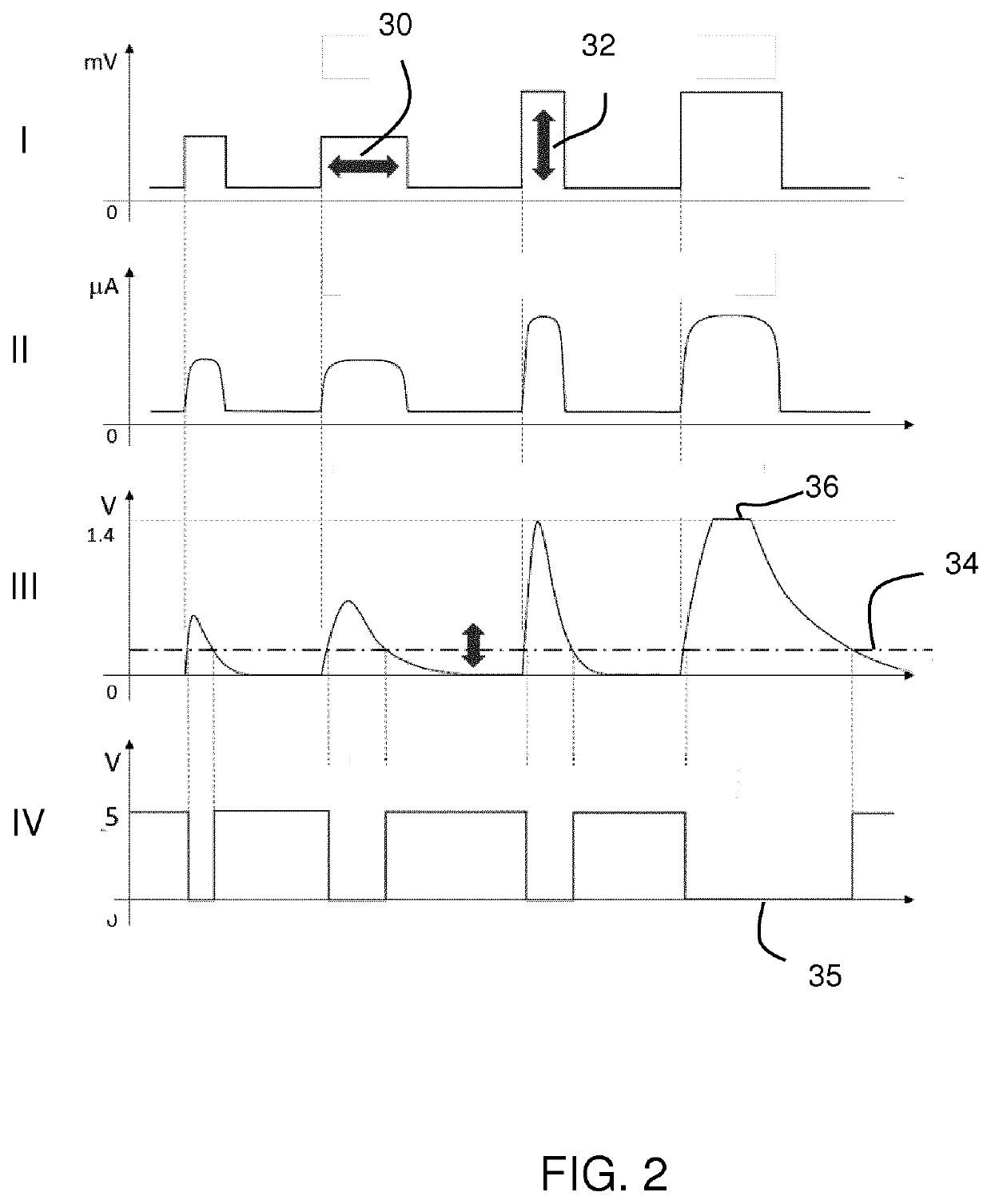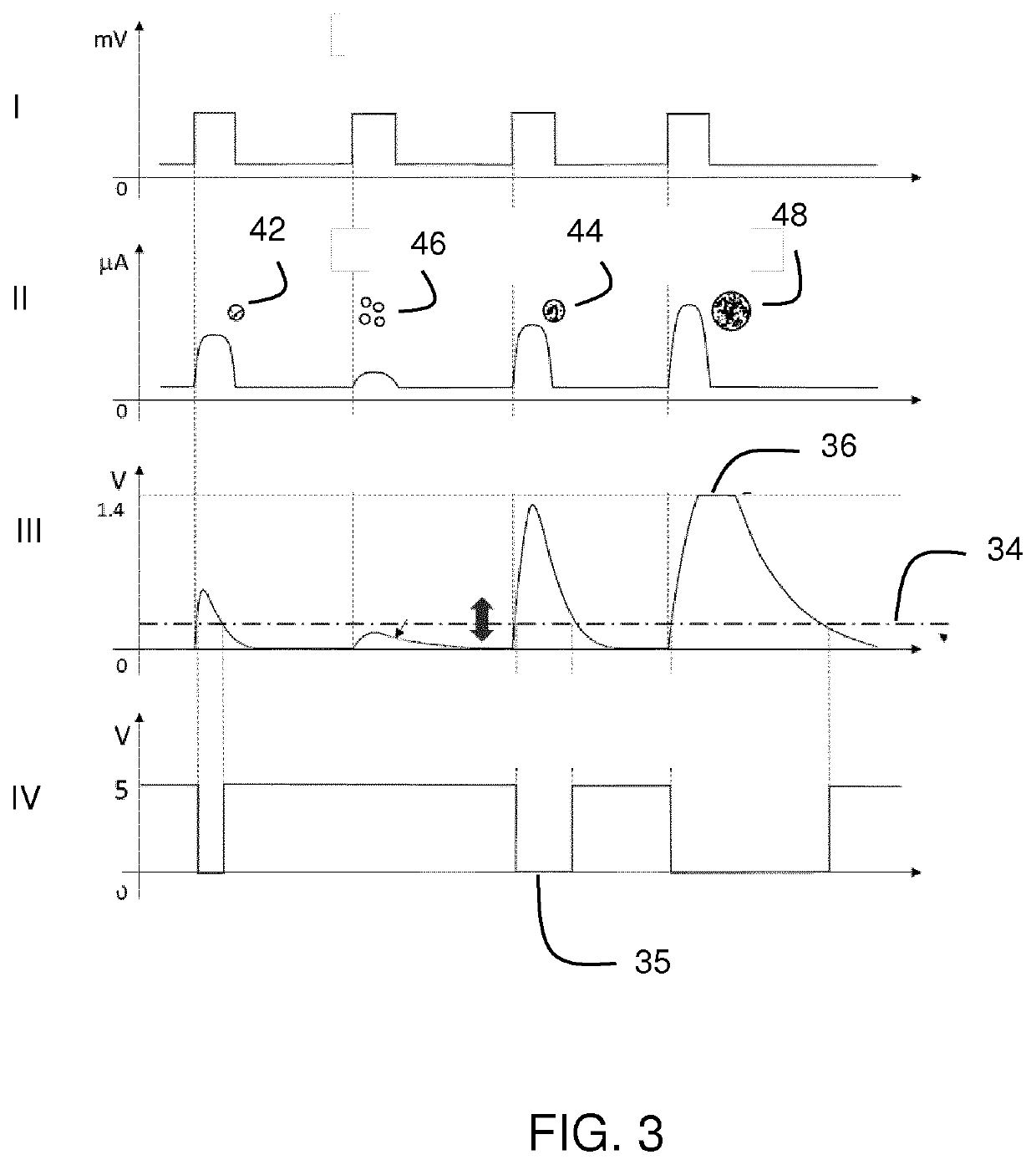Particle sensor and method
a particle sensor and particle technology, applied in particle and sedimentation analysis, measurement devices, instruments, etc., can solve the problems of low cost pm sensors that cannot provide size-resolved particle information for in-depth pollution pattern analysis, and cannot adjust the active size range dynamically, so as to achieve low cost
- Summary
- Abstract
- Description
- Claims
- Application Information
AI Technical Summary
Benefits of technology
Problems solved by technology
Method used
Image
Examples
Embodiment Construction
>[0064]This invention provides a particle sensor for sensing the number or mass concentration of particles within a particular particle size range in a sample of particles having a particular particle size distribution.
[0065]The particle sensor comprises a light source for providing light which is scattered by the particles to generate scattered light and a light detector for detecting the scattered light to provide a light detector signal. The particle sensor has a controller for analyzing the light detector signal to determine information relating to the particle size distribution and based on that information selecting a mode of operation of the particle sensor to sense the particles only within the particular size range.
[0066]Particle sensors which physically pre-separate particles in advance of sensing, thereby measuring only particles within a particular size range, are known. This invention is based on a particle sensor which has a controller to analyze the light detector sig...
PUM
| Property | Measurement | Unit |
|---|---|---|
| size | aaaaa | aaaaa |
| size | aaaaa | aaaaa |
| size | aaaaa | aaaaa |
Abstract
Description
Claims
Application Information
 Login to View More
Login to View More - R&D
- Intellectual Property
- Life Sciences
- Materials
- Tech Scout
- Unparalleled Data Quality
- Higher Quality Content
- 60% Fewer Hallucinations
Browse by: Latest US Patents, China's latest patents, Technical Efficacy Thesaurus, Application Domain, Technology Topic, Popular Technical Reports.
© 2025 PatSnap. All rights reserved.Legal|Privacy policy|Modern Slavery Act Transparency Statement|Sitemap|About US| Contact US: help@patsnap.com



